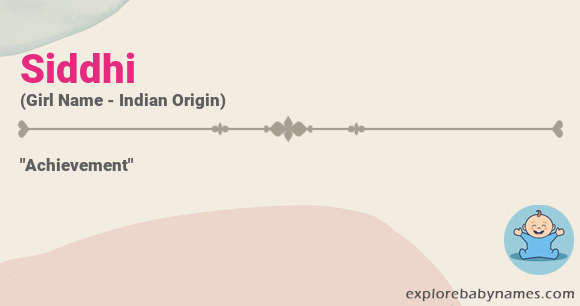
Yoga is a great exercise for back pain. These postures strengthen the spine and stretch muscles. They also help improve posture and reduce back pain. You may be surprised to know that strengthening the abdominal muscles helps to reduce the load on the back, too. Stretching can also increase flexibility and stimulate blood flow to tight muscles. These benefits are not limited to yoga. Here are some common ways to relieve pain.
Pose of the child
As the child's back pain pose for back problems is challenging because of how the body weight pulls on the torso. To make it more comfortable, use rolled towels to support your hips as well as your knees. Keep your arms close to your sides, and don't press your abdomen into your thighs. This will help relieve chest and shoulder pain. You can also use a support to balance your weight.
Although this pose is difficult, it can help increase flexibility and reduce muscle tension in your low back. To perform it, bend your knees so your big toes touch. Keep your lower arms muscles open and engage your core. This will help make the posture feel even more peaceful. You can modify this yoga pose as you would with any other. You should perform the child's posture while lying down or on your back.

Sphinx pose
The sphinx position is a great exercise for back pain to strengthen the shoulders and lower back. It is a great beginner pose for back pain and also serves as a conditional pose after spine surgery. The traditional yoga pigeon position is also known as the Sphinx. The legs are rotated inwardly and the torso is lifted from the ground. You can hold this pose for five to 10 breaths. Then, exhale.
The sphinx poses strengthens the gluteus, lower back, and shoulders. Beginners should practice beginner-level poses. Once the pain becomes more severe, you can move to higher levels. Sphinx poses are great for sciatica pain relief and provide a stretch for the lower back. Start by lying down on your back, with your knees bent. Your forearms should be tucked under your sides. This poses strengthens the back muscles as well as aligns the spine.
Downward-facing dog
To stretch your lower back and muscles, the Downward-facing dog is a great yoga exercise. Stand on your hands and feet and place your shoulders down. Then, walk your feet forward and push your heels toward the mat. Be sure to distribute your body weight equally between both feet. Hold the position for approximately five breath cycles. The sequence can be repeated five more times after the initial five.
While performing the Downward-facing dog, keep your shoulders relaxed and your elbows drawn out. Externally, your arms should be extended. You can make this position more comfortable by holding it for a few moments. You can practice pressing your heels into the mat, and then lifting your heels to your chest. This yoga move will increase flexibility in the hamstrings and stretch your lower back.

Triangle facing downward
The Downward-facing triangle exercise for back pain is a basic yoga posture that works on the balance and flexibility of the back muscles. If you suffer from pain in your back, it is best to consult a doctor before trying this pose. Because the pose requires both twisting and bending movements, it is not recommended to those suffering from back or neck pain. If you are in good physical condition, this pose can be beneficial for your back pain.
To perform this exercise, begin with your feet about four feet apart. Bend your right leg and bend the left knee. Draw a line connecting your left heel to the inner arch of your right foot. Keep your left leg straight and parallel to the ground. Inhale. Keep your legs strong as you alternate the right- and left-handed arms. Keep the pose for one minute and then switch sides.
FAQ
Does yoga have side effects?
Yoga poses some risks, as with all physical activities. Injury is the biggest danger. The main risk is injury.
You might feel dizzy or faint if you are new to yoga.
This is caused when blood pools in your brain. But don't worry; the sensation disappears quickly.
Do downward-facing dogs if you experience chest pains. Don't hold your breath. You'll only increase your heart rate and make things worse.
What is yoga?
Yoga is based upon alignment, breath control. Meditation and stillness principles. Yoga can be practiced properly to create peace and calm within the practitioner.
Warming up is the most important part of any yoga class. You might begin with stretches such as forwarding bends (bending forward), reverse bends (bending backward), twists and side bends. These moves help loosen tight muscles, and prepare you to take on deeper poses.
Next comes the balancing pose called "standing." This pose involves standing on your feet with your arms extended at your sides and looking down towards your floor. Your body should feel rooted, centered, and balanced.
Next, you need to get into deep stretching postures. To do these poses, lie face-up on a flat surface and lift your legs. Keep your balance and keep you from falling by grasping onto something sturdy. If you don’t possess anything to grab on to, put your hands on a nearby surface.
After doing all these poses, you will move into a series of standing poses. These include the mountain, warrior, downward, upward, plank, and final poses.
It is important that you breathe deeply and slowly while doing yoga. Deep breathing will not only purify your lungs but will also calm your mind. Focusing on your exhales and inhales can help you do this. Try counting every time your take a deep breath.
Yoga can be done anywhere, even while you cook. Just follow the same steps above, but sit upright instead of lying on the ground.
If you are new to yoga, try starting with just 10 minutes daily. And remember, no matter how old you are, you can always benefit from yoga.
Is yoga beneficial for people with chronic disease?
Yoga may help people with chronic illnesses such as diabetes and heart disease by improving overall fitness, reducing stress, and increasing flexibility.
Yoga can also be helpful for other conditions, such as arthritis and cancer, depression.
Is yoga a good way to quit smoking?
People may stop smoking by practicing yoga. Yoga makes them feel more positive, and reduces stress. It also helps reduce weight gain from overeating food. This could allow you to quit smoking.
Do I need to get warm before doing yoga?
No. No.
However, stretching your muscles before going to exercise can help to relax stiff or sore muscles.
Statistics
- Start your Fall off right with 20% off All Access Membership when you sign up by 9/25! (corepoweryoga.com)
- Lock in 25% off your Founding Member rate. (corepoweryoga.com)
- A 2020 review of 27 studies (1,805 total participants) of yoga interventions in children or adolescents found reductions in anxiety or depression in 70 percent of the studies, with more promising results for anxiety. (nccih.nih.gov)
- According to calorie estimates calculated at Harvard Medical School, the average 125-pound person burns about 120 calories in a half hour of hatha yoga, and a 185-pound person burns about 178 calories in that half hour. (everydayhealth.com)
- Gentle yoga has been shown to ease some of the discomforts of tender, swollen joints for people with arthritis, according to a Johns Hopkins review of 11 recent studies. (hopkinsmedicine.org)
External Links
How To
What can yoga do for your menopause symptoms
Yoga is an ancient practice that originated in India and focuses on stretching, breathing, and meditation. It has been used for thousands years to help people stay fit. It has been increasingly popular in recent years as people look for alternative ways to stay healthy and active during times of stress or illness.
Yoga is about using postures (asanas), in order to stretch muscles and improve flexibility. This can help relieve tension, increase strength, and endurance.
There are also many different types of yoga, including Ashtanga, Hatha, Vinyasa flow, Bikram, etc. Each type focuses on specific aspects of the body, such as breath, stretching, and relaxation.
The aim of all forms of yoga is to achieve balance within the body and mind. The benefits of yoga include improved fitness, better sleep quality, weight loss, increased energy levels, and reduced stress levels.
Yoga may be beneficial in the treatment of anxiety, depression, insomnia, and other conditions. But, it is difficult to prove its effectiveness for other health problems such as menopause symptoms.
As well as helping you feel healthier and happier, yoga teaches you how to relax and manage stressful situations - skills that could be helpful when dealing with menopause.
Important to remember that yoga can cause muscle pain after exercise. Therefore, it is advisable to start with a low intensity level. If you have concerns about your current condition or are unsure whether you would benefit from yoga, speak to your doctor before starting.